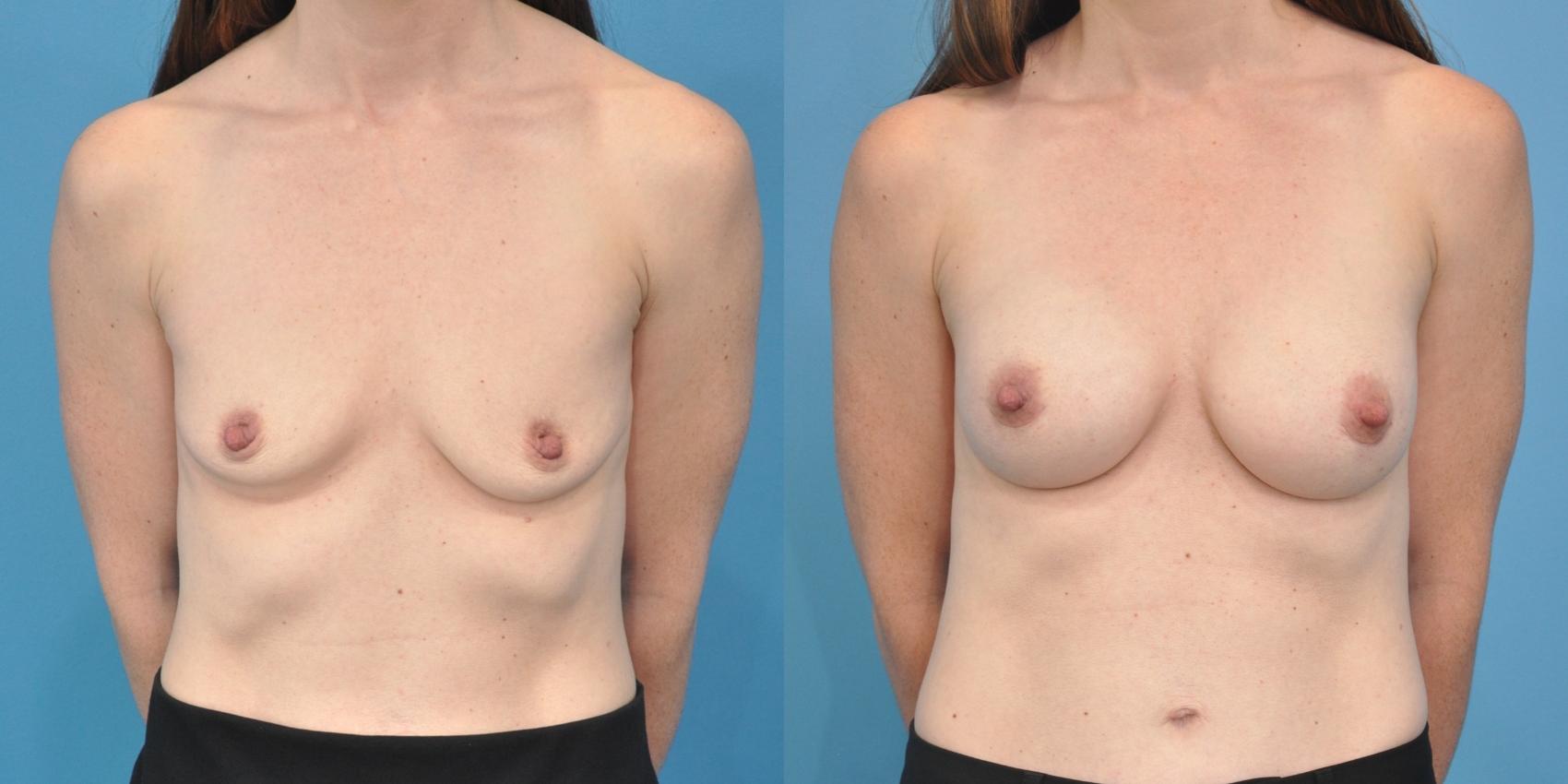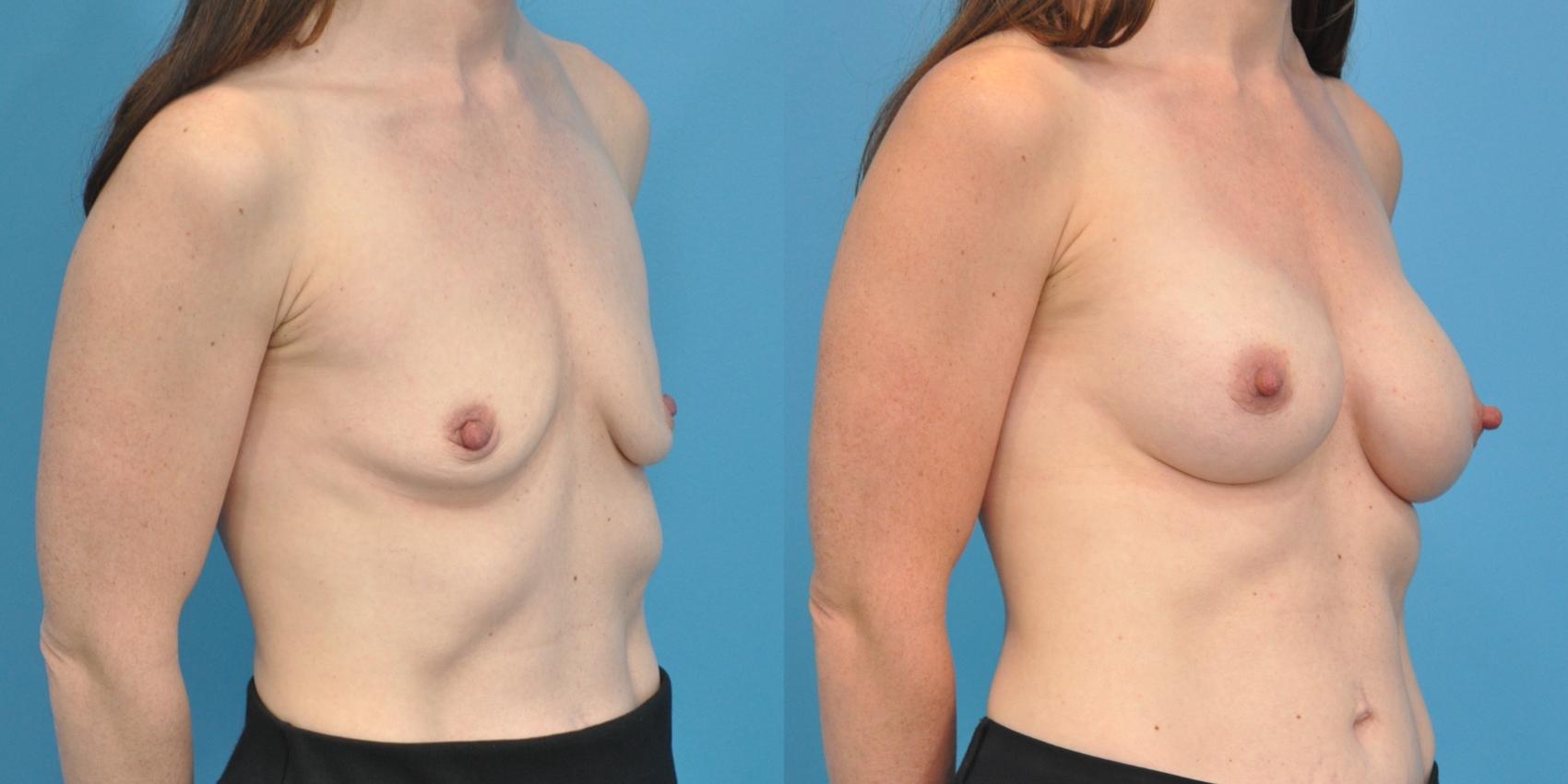
Choosing between silicone and saline implants is an important decision every breast augmentation patient has to make. At my Northbrook, IL, plastic surgery practice, I frequently consult with patients about the benefits of each option as we work together to create the best results.
While these implant types work essentially the same way and have many characteristics in common, there are a few differences you should know about, and I cover those in this post.
What Silicone & Saline Implants Have in Common
Let’s start by looking at how silicone and saline breast implants are alike.
FDA Approval
Both types of implants are FDA-approved, though they have different age guidelines—more on that below. Both options are approved at any age for breast reconstruction.
Customizable Sizes, Profiles & Placements
Both implants offer the option to personalize your outcome in several ways. This includes size, profile (how much the implant projects from the chest), and placement (either above or below the pectoral muscle). Learn more about customizing your breast augmentation results in this previous blog post.
Durability
Both saline and silicone-filled implants feature a silicone outer shell. Both typically last about 10 to 20 years, though this timeline varies from person to person.
How Silicone & Saline Breast Implants Are Different
Next, let’s examine the biggest differences between these implant types.
Fill Material
- Saline implants: Saline implants are filled with a sterile saltwater solution encased in a silicone shell. The solution is injected into the implant shell after it is placed in the breast.
- Silicone implants: Silicone implants are filled with a cohesive silicone gel. The gel is a thick, gel-like substance that is designed to mimic the feel and look of natural breast tissue.
Age Guidelines
- Saline implants: Saline implants are FDA-approved for cosmetic use in people aged 18 and older.
- Silicone implants: Silicone is approved for cosmetic use in people 22 and older.
Rupture Risks
- Saline implants: Saline implant ruptures are obvious; if the shell ruptures, the saline solution will simply leak out and be absorbed by the body.
- Silicone implants: Silicone implant ruptures may not be as apparent. It is recommended that you monitor these implants with regular MRIs or ultrasounds to detect any issues.
Look & Feel
- Saline implants: Saline implants are typically firmer than silicone implants. This is because the saline solution is not as soft as silicone gel. Saline implants are more likely to demonstrate rippling and other effects that may compromise the natural look of your results.
- Silicone implants: Silicone implants are designed to feel and look more natural than saline implants, which is one reason why about 85% of breast augmentation patients choose silicone gel implants, according to the American Society of Plastic Surgeons (ASPS). The silicone gel is soft and pliable, and it can move and conform to the body in a more natural way. Depending on your needs, silicone implants can have varying degrees of firmness to match the feel of your own breast.
Cost
Saline implants cost less than silicone implants. This will factor into the overall cost of your breast augmentation.
Incision Size
- Saline implants: Saline implants can be inserted through a smaller incision than silicone implants. This is because the saline solution is injected into the implant shell after it is placed in the breast.
- Silicone implants: Silicone implants are pre-filled, requiring a slightly longer incision, typically along the areolar border or in the inframammary fold.
Making the Choice
While you have plenty of pros and cons to ponder, remember that you do not have to choose your implant type on your own. It’s best to talk your options over with a board-certified plastic surgeon who will guide you to the right option for your body, lifestyle, and goals.
This before and after photo shows a 30-year-old breast augmentation patient who chose silicone gel implants:
WARNING:
This feature contains nudity. Please click OK to confirm you are at least 18 years of age and are not offended by such material.


To see additional examples of the results created with each type of implant, please visit my before-and-after photo gallery.
If you would like to discuss your options with a breast augmentation surgeon in the Northshore area, please contact me online or call (847) 504-2333.
